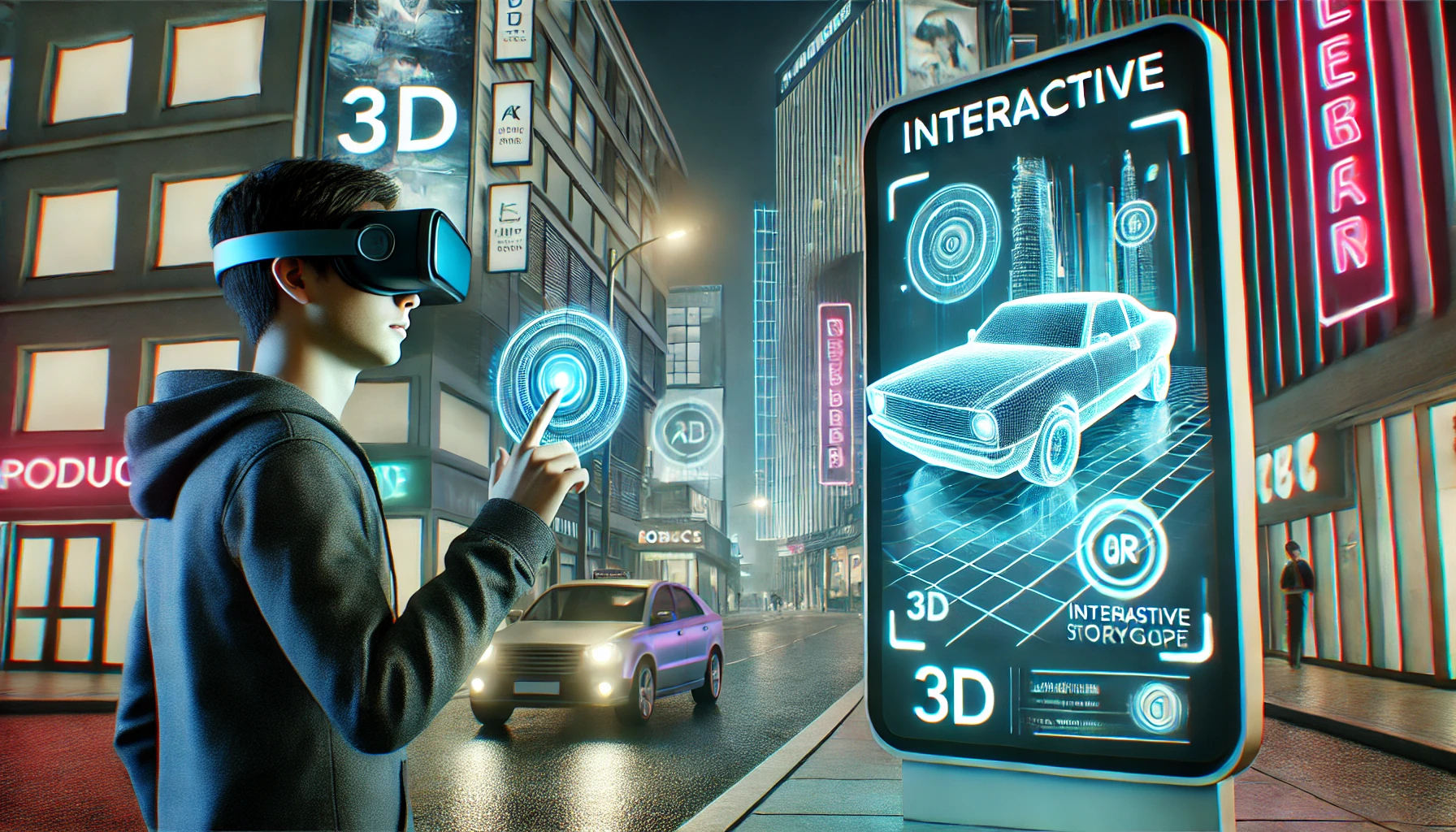
Advertising is now turning away from passive content consumption, toward immersing brand experience. Interactive storytelling, 3D, and Augmented Reality (AR) are reinventing brand-consumer relationships. Consumers now do not just watch, they experience ads. This shift is driven by advancements in digital branding as well as mar-tech innovations and by creative studios utilizing advanced technology for creating great stories. Be it through immersive AR campaigns or hyper-realistic 3D content, brands are building stories in which consumers are invited to take part instead of being mere spectators. Let us explore more on this topic.
With traditional advertising, the message is communicated using static images, texts, or videos. Although effective, such modes often lack the expected depth and intensity that would sell a message to someone in today’s digital landscape. However, interactive storytelling has changed it all, making brand experiences become more engaging, memorable, and shareable, thus reaching audiences through a new dimension via 3D and AR.
1. Improved Engagement: Interactive content holds users’ attention longer than traditional ads, thus increasing brand retention
2. Personalisation: AR and 3D enable brands to tailor their experiences as per user preferences
3. Emotional Connection: Immersive experiences create deeper emotional ties with consumers
4. Virality & Shareability: Unusual interactive content tends to promote social media sharing
It’s no longer optional for brands to invest in 3D and AR today, it is a must.
3D technology has revolutionized the art of storytelling by brands. Rendering and real-time 3D graphics have made it possible for advertisers to create wow factors in hyper-realistic content. The shifting paradigm of 3D technology concerning story-telling employed in advertising applications is now not just theory but reality. Real-time 3D graphics, however, have really advanced to give unprecedented freedom to advertisers for crafting truly stunning, hyper-realistic content resonating with the audience.
1. Product Visualisation
2. Virtual Brand Environments
3. Hyper-realistic 3D Characters and Mascots
Creative studios and mar-tech companies are redefining the very limits of the 3D narrative approach, thus crafting something more than just digital branding.
AR creates a bridge between the digital and the real world so brands can weave interesting and engaging experiences. Consumers are graduating into a new phase of advertising as browsers and wearables equipped with AR features are commonly available to them.
1. AR Shopping & Try-On Experiences
2. Location-Based AR Ads
3. Interactive Packaging & AR Storytelling
4. Gamification & AR-Driven Campaigns
With the evolution of AR, those brands that employ it in their digital marketing strategies will remain ahead of the competition.
While developing efficient 3D and AR advertising strategies, brands consult mar-tech agencies and creative studio firms that specialize in immersive storytelling.
1. Data-Driven Personalisation: The mar-tech companies combine AI and analytics to create hyper-personalised AR and 3D experiences
2. Integration Across Platforms: It ensures a consistent experience across the web, mobile, and social media for the AR and 3D ads
3. Performance Tracking: Provides real-time data collection to measure engagement and optimize campaigns.
1. 3D Content Creation: Studios create hyper-realistic 3D assets, characters, and environments
2. Interactive Storytelling: It develops immersive brand narratives that captivate audiences
3. Development of AR Experiences: Studios develop AR applications that enhance interactions between the brand and consumers
Brands that team up with top mar-tech agencies and creative studios are the ones setting the path for advertising interaction in 2025.
With the advancement of technologies, the possibilities for 3D and AR in advertising will go even further. Some trends should include:
1. AI-Powered AR Experiences: AI-driven personalization will enhance AR interactions based on user behavior
2. Metaverse & Virtual Shopping Spaces: Brands will build virtual showrooms where users can explore products in 3D
3. Wearable AR & Smart Glasses: AR advertising will extend beyond mobile screens to smart glasses and wearable devices
4. Holographic & 3D Billboard Advertising: Cities will feature large-scale 3D holograms for advertising
With continuous innovation, the future of advertising will become more immersive, interactive, and engaging than ever before.
With 3D and AR, opportunities for interactive storytelling have transformed digital branding. As mar-tech agencies and creative studios go all out to achieve immersive advertising, brands that embrace such technologies will gain precedence above the rest.